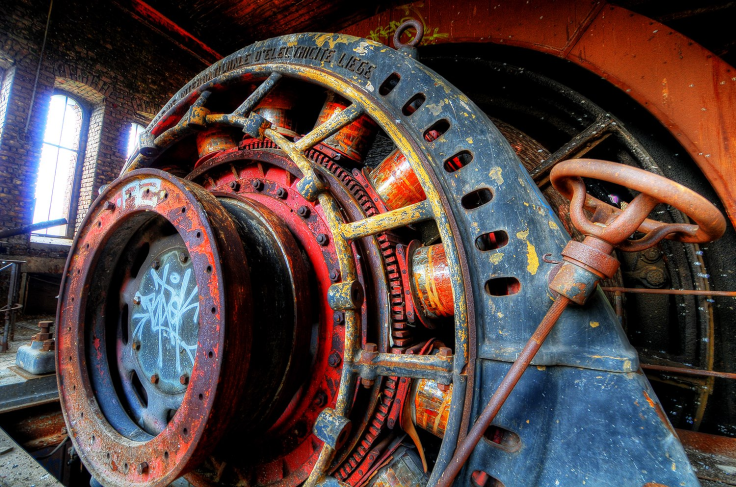Of all possible Urbex destinations, abandoned industrial sites are probably one of my favorites.
To paraphrase Henry Miller; I’ve always looked on industrial decay as being just as wonderful and rich an expression as growth.
To me, appart from infiltration (see here), industrial Urbex is the fucking Mecca of urban exploration. The types of abandoned factories and plants making for good exploration are almost endless. From decaying smelters to decrepit labs, from old wood shop to power plants in ruins; capitalism in rubble makes vivid and telling imagery.
The types of abandoned factories and plants making for good exploration are almost endless. From decaying smelters to decrepit labs, from old wood shop to power plants in ruins; capitalism in rubble makes vivid and telling imagery.
First rate abandoned manufacturing grounds are usually at least a century old, and there is often a very postmodern feel to some of these places.
The “best” abandoned factories mostly date back, to a time when the self-proclaimed “great barons of industrialism” had buildings constructed in their image; grandiose, ubiquitous and often a little ostentatious. Today, those constructutions seem almost baroque, in their vulgar self-importance. I wonder what the Google building will look like, to my grand-children…
At any rate, those godforsaken venues were, at the time, the “castles” of the new born industrial eras. They were a modern version of the great cathedrals, raised to our contemporary God: money!!
The feeling is a bit like eating a Black Forest cake: it looks great… it tastes empty… and you feel bloated after… not to mention the possible nausea.
Industrial Urbex are quiet decadent that way: and it is, at leat to me, part of the proposition.
Today, these dilapidated workshops offer an outdated appeal. The charm of a “glorious” era that saw the rise (and collapse) of an industrial revolution that (at least in the “west”) began at the end of the 19th century.
Finally, and certainly not least of all reasons, these locations are often extremely photogenic.

If you are interested in this sort of thing (and you should not), a majority of run-down manufactures are located on edges of cities, often near waterways for ease of transport of either their raw materi or finished products. Often both.
Heck, there are even whole towns dedicated and built up around some industrial complexes and mines.
As for most other forms of urbex, the visit of abandoned industrial ground is theoretically prohibited because…well… most of them are privately owned, or at least, their remnants are.
No matter if in use or not, if it isn’t yours, you’re not supposed to be there (see here). Given some of those places still harbor valuable materials, you must be aware they will sometimes be guarded by private security firms, which generally have clear intervention protocols: call the police on all trespassers.

To be fair, it should be noted that this general entrance prohibition also exists because of the many dangers lingering in abandoned industrial halls. Most of them are ridden with hazardous materials, there are risks of fall, structural collapse, electrocution, the air is often full of asbestos dust,etc… (see here).
Another particular risk linked to industrial Urbex, believe it or not, is getting lost. Most of those crippled settings are vast and composed of mega-structures, oftentimes occupying many acres.
Decrepit industrial sites represent a large part of the urbex inventory not only because they are easily penetrable, but also because they are at hand in most geographical regions.
Due to its shock and post-apocalyptic imagery, it is also the most prominent Urbex subject in galleries and public exhibitions.

Sometimes, vacated industrial venues are bought by some local authority, or even put under a public body guardianship, before they are cleared and destroyed.
In this case, pictures taken during visits serve as a visual testimony of endangered industrial heritage.
 Often, such sites are visited by people who are also interested in industrial history and have a particular respect for the place, and what it represents. Here, we are approaching “industrial archeology”, which mainly identifies and highlights the specific industrial heritage of a given geographical region.
Often, such sites are visited by people who are also interested in industrial history and have a particular respect for the place, and what it represents. Here, we are approaching “industrial archeology”, which mainly identifies and highlights the specific industrial heritage of a given geographical region.
As a matter of fact, some abandoned industrial sites have even been legally classified as cultural heritage, making them secure and somewhat accessible: the U4 blast furnace from Uckange in France, the Volklinger Hütte in Germany or the perennial favorite: the Chernobyl nuclear plant in Ukraine.
These destinations provide an alternative to visiting prohibited scenes and remove the illicit discovery aspect usually associated with hardcore Urbex.
Unfortunately, it is rather rare to find a well preserved vacated industrial site and it is mainly due to vandalism and more importantly, looting.
Scavengers will have looked for furniture, coper wire and other precious metals, machinery, and anything else of value.
Some socially conscious urbexers are trying to make the public aware of this.
But honestly, hardly anyone gives a shit.
I would absolutely love to go through one of these with a guide. Knowing myself I’d probably mess up some rules and wind up drinking mercury on my own.
LikeLiked by 1 person
Actually, some of the toxic effects of mercury are partially or wholly reversible, either through specific therapy or through natural elimination after exposure has been discontinued. Heavy or prolonged exposure, however, can do irreversible damage.
Always err on the side of caution and you’ll be fine. Regardless, avoid industrial infiltration alone, if only because two pair of eyes are better then one !!
LikeLiked by 1 person
I will try and find another to join me then
LikeLiked by 1 person